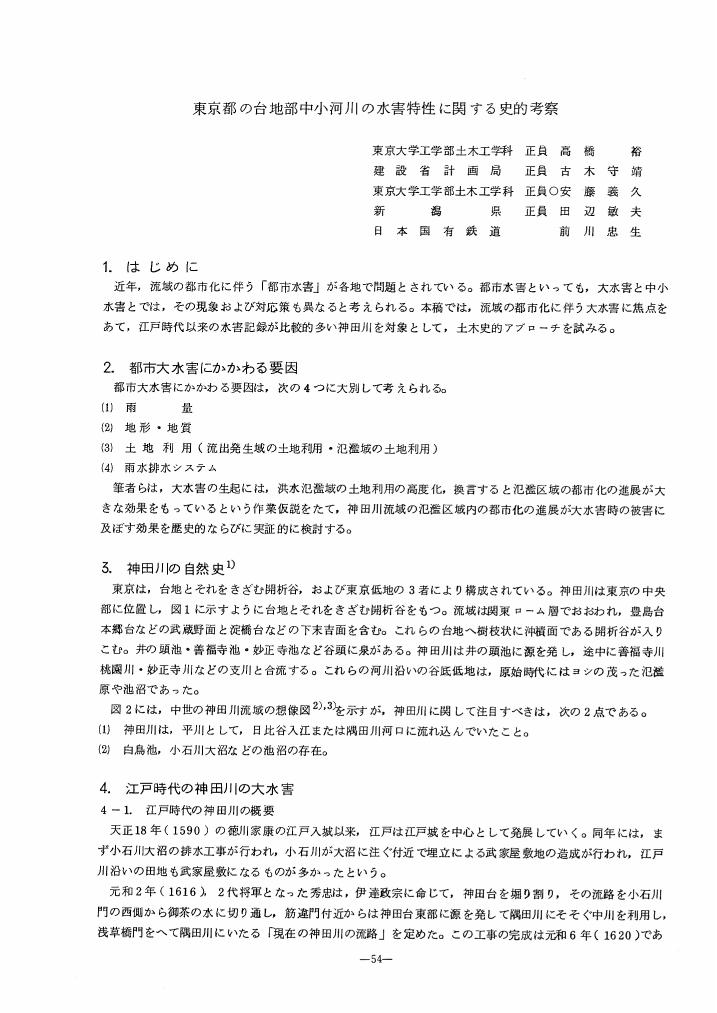1 0 0 0 OA 東京都の台地部中小河川の水害特性に関する史的考察
- 著者
- 高橋 裕 古木 守靖 安藤 義久 田辺 敏夫 前川 忠生
- 出版者
- 公益社団法人 土木学会
- 雑誌
- 日本土木史研究発表会論文集 (ISSN:09134107)
- 巻号頁・発行日
- vol.1, pp.54-61, 1981-06-15 (Released:2010-06-15)
- 参考文献数
- 6
- 被引用文献数
- 1
1 0 0 0 OA 城原川流域における野越の役割と効果に関する研究
- 著者
- 田辺 敏夫 大熊 孝
- 出版者
- Japan Society of Civil Engineers
- 雑誌
- 土木史研究 (ISSN:09167293)
- 巻号頁・発行日
- vol.21, pp.147-158, 2001-05-01 (Released:2010-06-15)
- 参考文献数
- 48
- 被引用文献数
- 1 4
The River Act was amended in 1997 in order to add flood-restraining forest belts, which allow a flood to run over levees as a flood control facility. Change were also made to reflect residents' opinions. Further more, a report on the use of traditional river improvement measures was submitted by the River Council in 2000.There are nine deversoirs on the Jobaru-River Basin of the Saga Plain, and these are also called NOKOSHI. They were constructed in the early Edo Era by traditional tale and are precious examples of classic flood control structures that allow overflowing. Very few of these remained after river improvement by modern measures undertaken since World War II.In this paper, we describe the historical details of the construction of NOKOSHI and then reevaluate the roles and effects of these from a new point of view. Secondary levees of NOKOSHI played an important role in reducing overflow damage, but most of these were removed. By forming flood-retarding basins, the effect of NOKOSHI is equivalent to that of the planned Jobarugawa Dam, but the cost-benefit evaluation is higher than that of the Dam. By using of NOKOSHI, flood damage can be controlled over the entire basin
